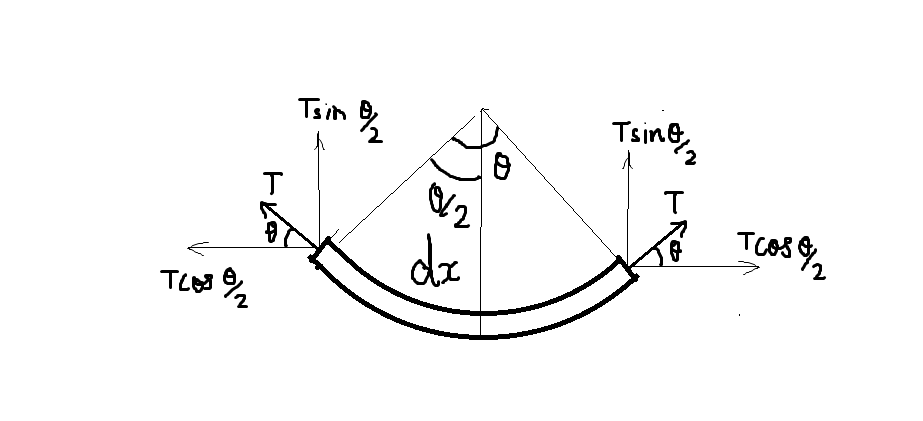Question
Question: A metal ring of mass m and radius r is placed on a smooth horizontal table and is set rotating about...
A metal ring of mass m and radius r is placed on a smooth horizontal table and is set rotating about its axis so that each part of the ring moves with a speed, v. The tension in the ring is –
A. 2πrmv2
B. rmv2
C. πr2mv2
D. 2rmv2
Solution
When a body is moving about its axis, there is a force acting on it which pulls the object towards the center. This force is called the centripetal force. The expression for centripetal force is given by –
F=rmv2
Complete step by step solution:
Consider a small line element of the ring dx with included angle θ as shown:

If M is the mass of the ring and R is the radius of the ring, then
The mass per unit length of the ring –
m=2πRM
Thus, the mass of the line element dx –
dm=2πRM.dx
Since the ring is rotating, there is a centripetal force acting on the ring element. This centripetal force is equal to the tension on either side of the ring.
However, we see in the diagram that tension is acting along with the ring element. Thus, we must resolve the tension force into its components – Tsin2θ and Tcos2θ
Now, the 2 components of Tcos2θcancel out each other and the other component Tsin2θacts on the ring. This is equal to the centripetal force.
2Tsin2θ=Rmv2 2Tsin2θ=Rdm.v2
Substituting the value of dm -
2Tsin2θ=2πRM.dx×Rv2
Since θ is very small, sinθ≈θ
2T2θ=2πRM.dx×Rv2 Tθ=2πRM.dx×Rv2
The angle θ=Rdx
T(Rdx)=2πRM.dx×Rv2
This is a differential equation. Solving the above differential equation w.r.t dx
∴ Hence, the correct answer is Option A.
Note:
Students generally, confused while writing the horizontal and vertical components of a vector. You can use a simple and handy thumb rule as shown here:

Consider a vector a inclined at angle θ as shown in the above figure:
- The line that is attached to the angle θ is designated as cosθ.
- The other line that is not attached to the angleθ is designated as sinθ.
